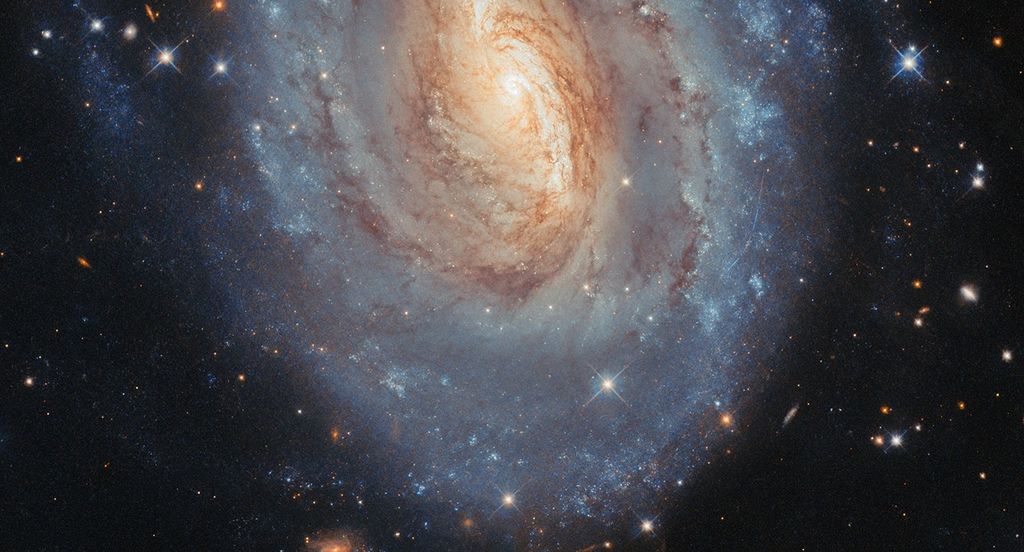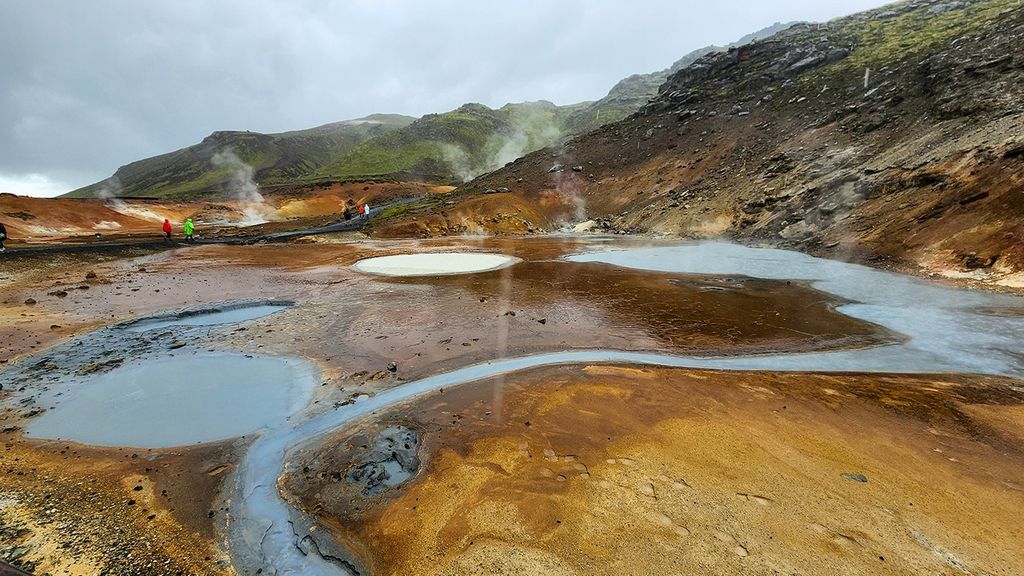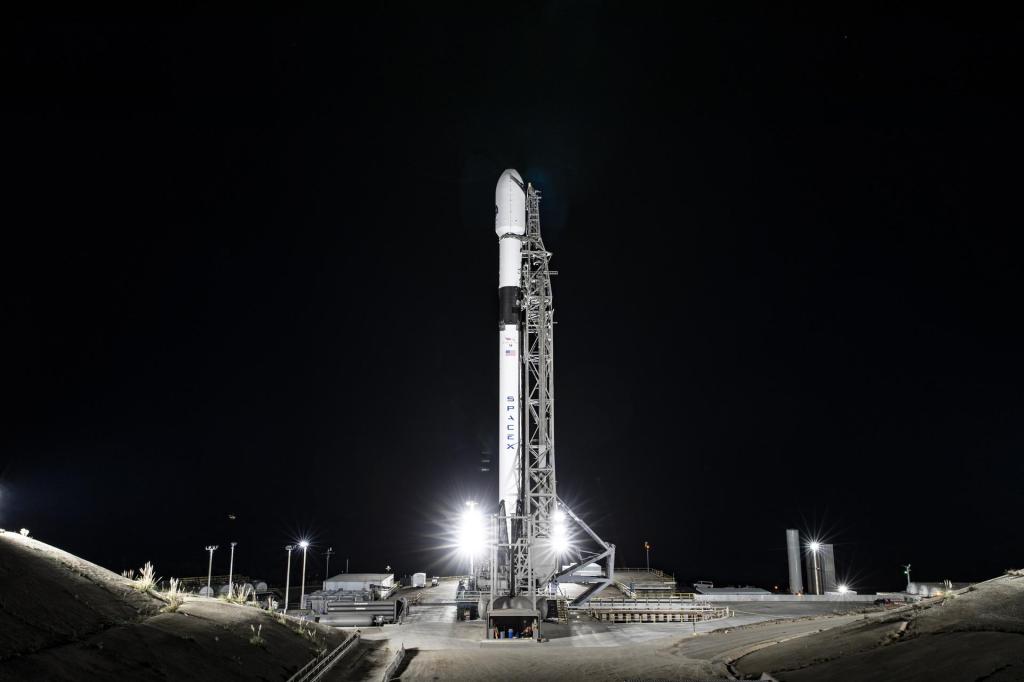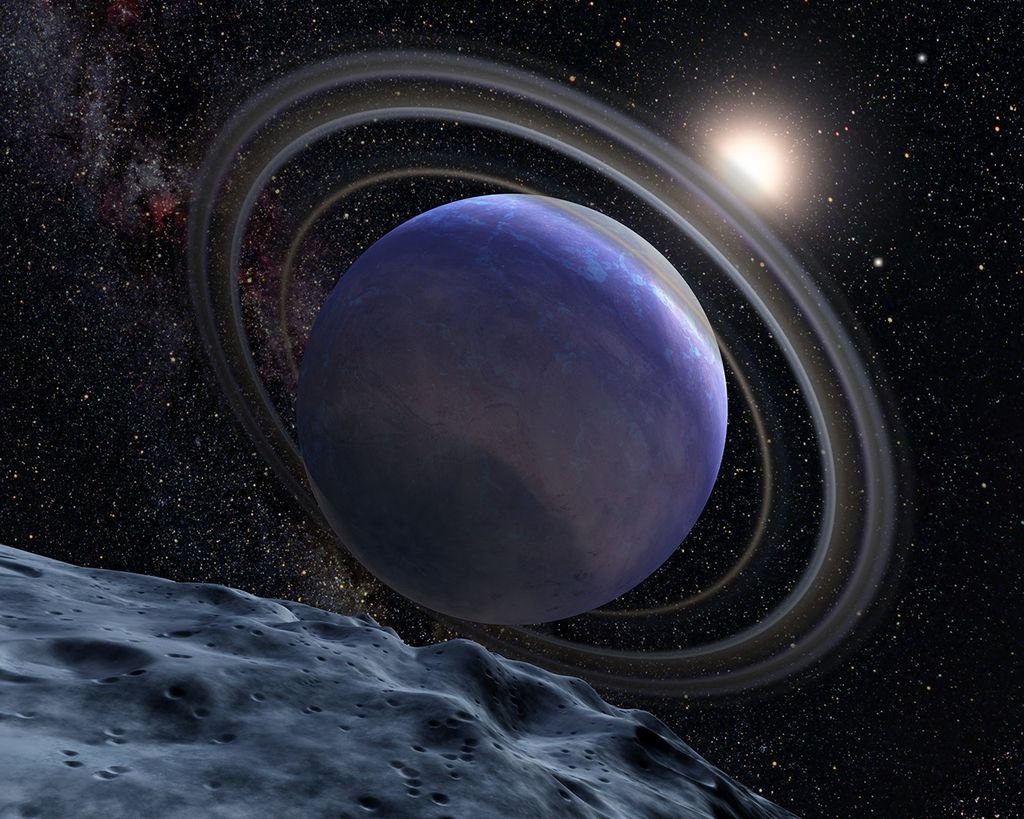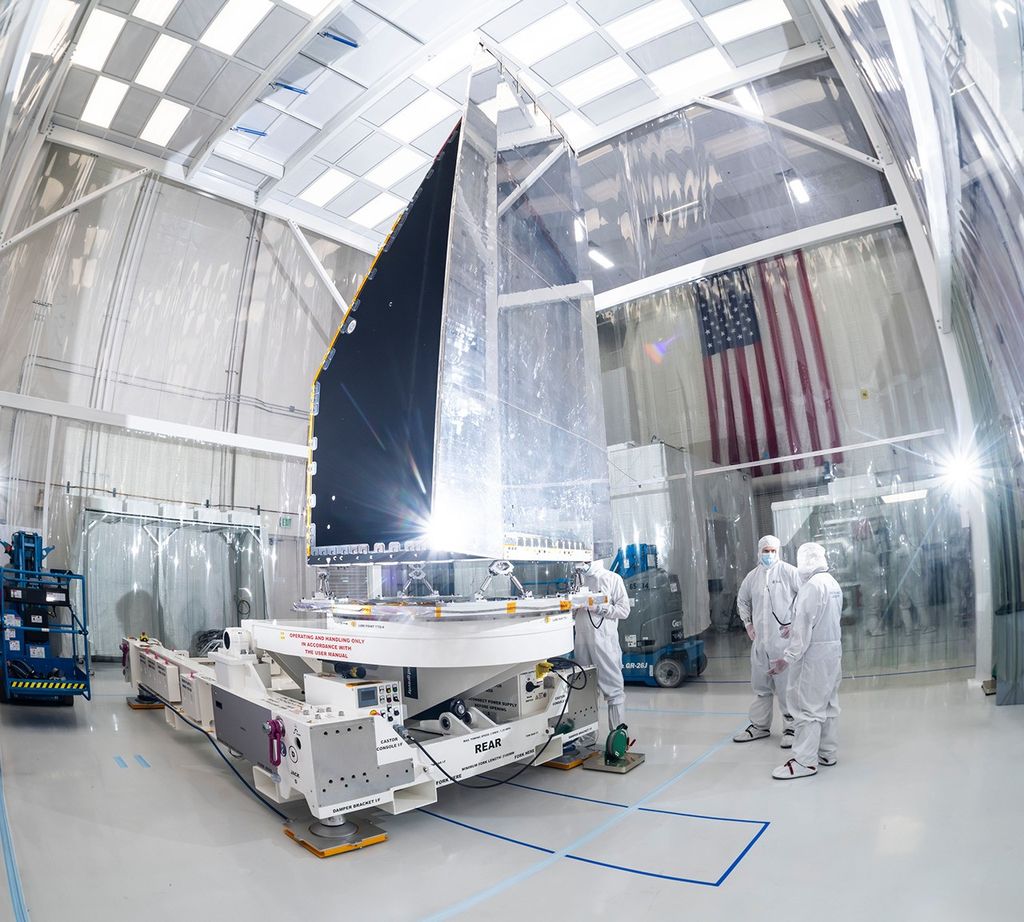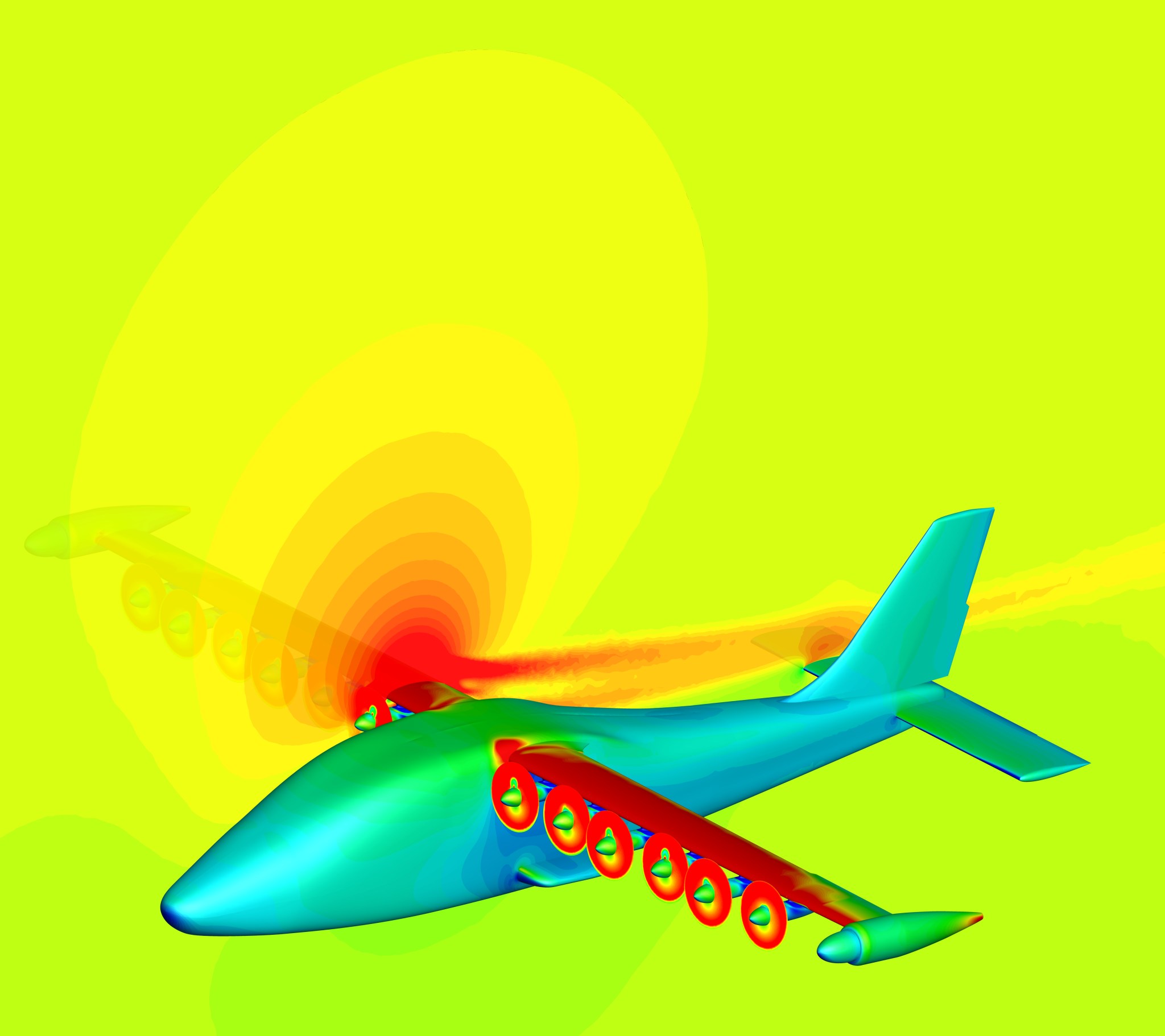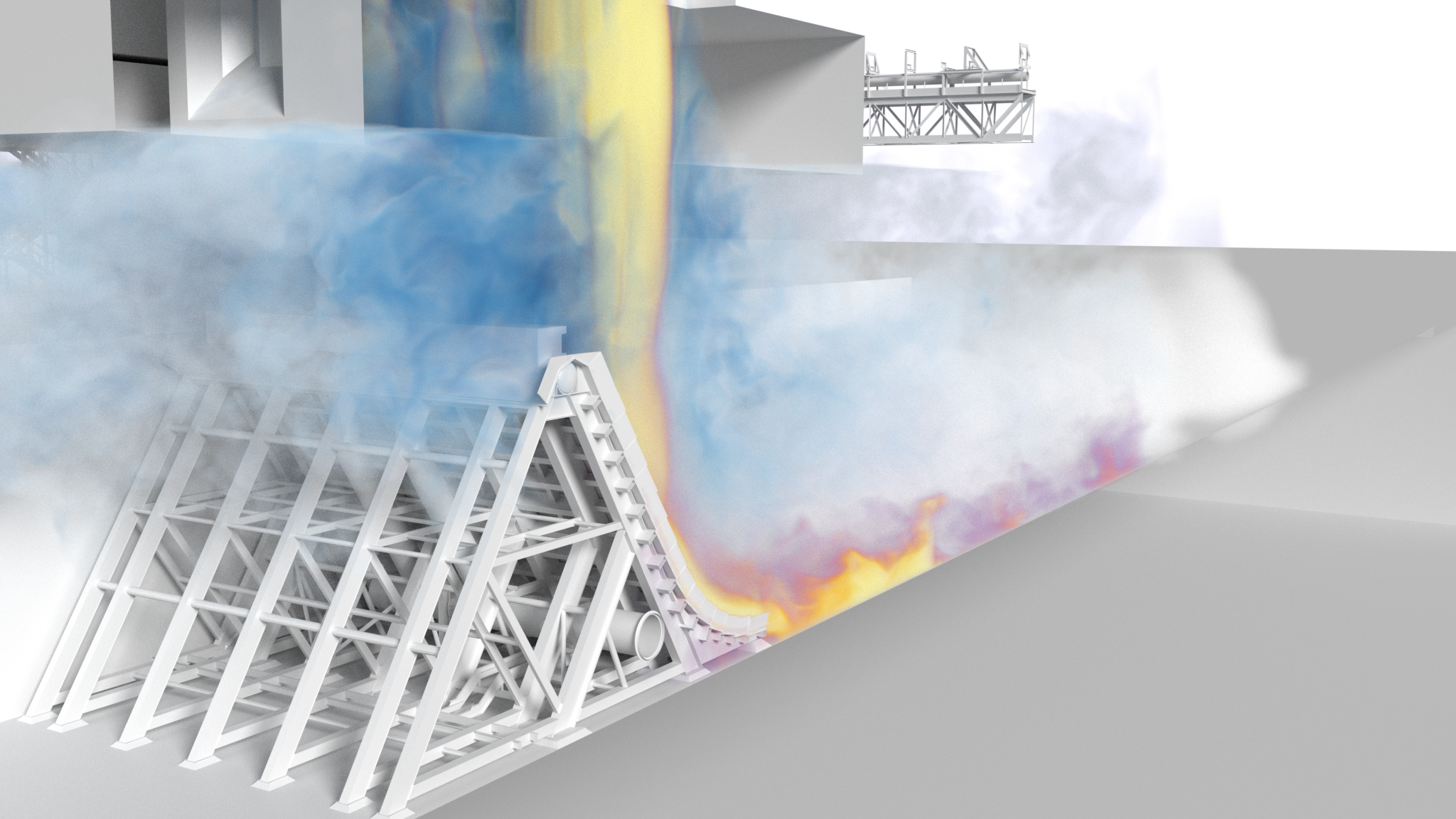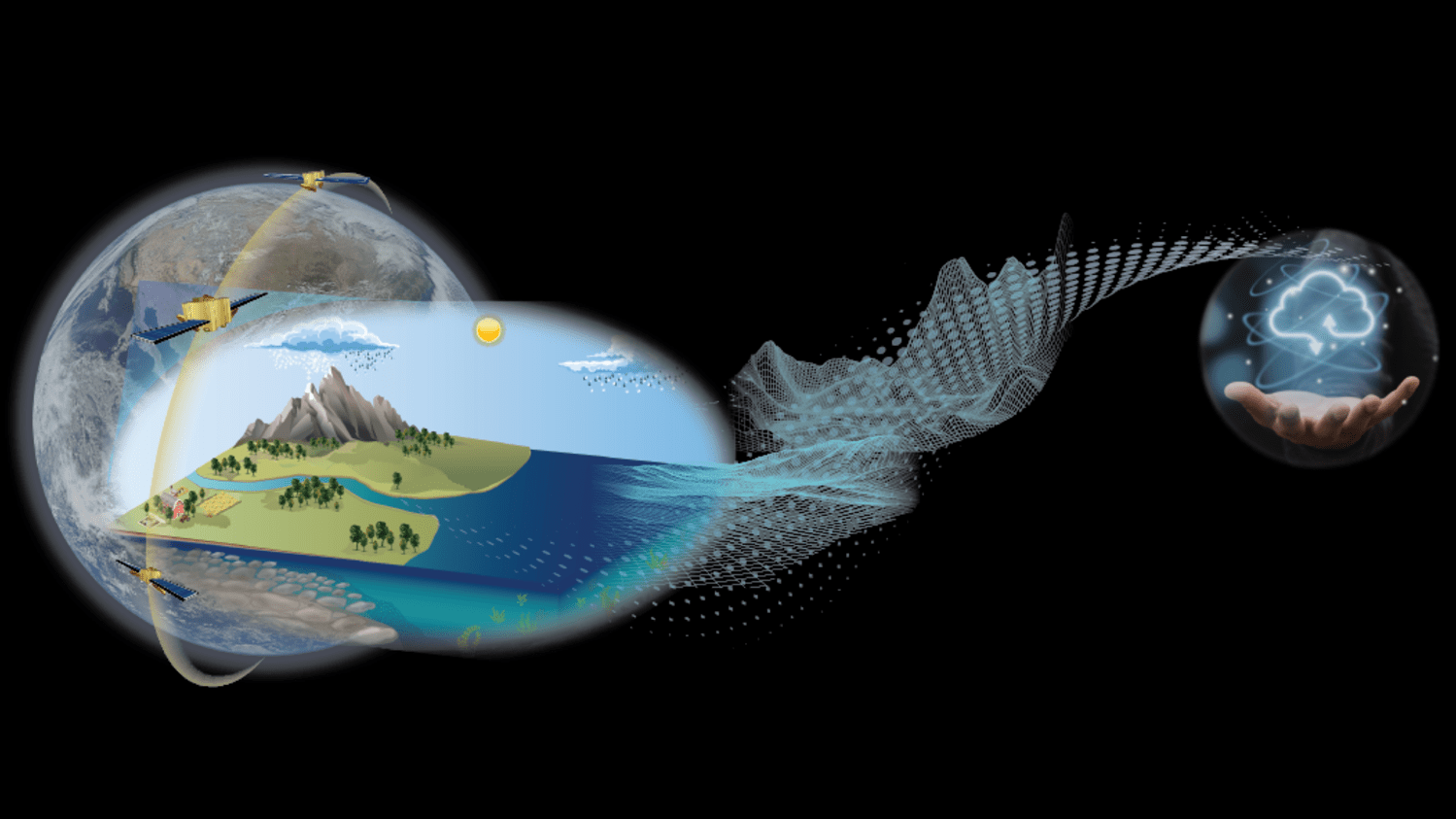From exploring the solar system and outer space to improving life here on Earth, supercomputing is vital to NASA missions. The agency will host a virtual exhibit to showcase how these powerful machines enable science and engineering advances during the International Conference for High Performance Computing, Networking, Storage and Analysis. This year’s conference is being held both in St. Louis, and virtually Nov. 14–19, 2021.
Here are six things to know about NASA supercomputing research projects:
1. Supercomputers lead to environmentally friendly, all-electric plane designs
NASA’s X-57 Maxwell is a revolutionary experimental airplane designed to demonstrate that an all-electric airplane can be more efficient, quieter, and more environmentally friendly than those powered by traditional gas piston engines. The X-57 uses a unique distributed electric propulsion, or DEP, system that includes 12 electrically powered propellers for additional lift at takeoff and landing.
NASA created a computational fluid dynamics, or CFD, aerodynamic database for a piloted simulator, airworthiness assessments, and safety analyses prior to the first flight. Aerospace engineers at NASA’s Langley Research Center in Hampton, Virginia are using the Pleiades supercomputer at the NASA Advanced Supercomputing, or NAS, facility at the agency’s Ames Research Center in California’s Silicon Valley to perform their CFD. This year the researchers focused their simulations on determining the impacts of DEP motor failures, which are used in simulators so test pilots can prepare for the possibility of system failures during real X-57 flight tests. This work will directly impact flight safety during the real flight tests, and ultimately the life of the pilot.
2. Massive simulations help keep astronauts safe
With NASA’s first Artemis mission scheduled to take off in 2022, engineers and researchers across the agency are steadily working to ensure the safety and success of the missions that will use NASA’s Space Launch System, or SLS, and the Orion crew module.
To support upcoming missions from Launch Complex 39B at NASA’s Kennedy Space Center, engineers at NASA Ames developed a new CFD approach to accurately simulate the launch environment, including its water-based sound suppression system, to estimate acoustic loads during liftoff — a necessary step for the design and certification of the agency’s vehicles and flight instruments.
Concurrently, engineers at NASA’s Marshall Space Flight Center in Huntsville, Alabama are running simulations on NASA supercomputers to better understand and predict non-acoustic aspects of the SLS liftoff environment — specifically, how the solid rocket boosters will interact with the water-based sound suppression system at ignition, which may create large, but short-lived, pressure forces.
Orion also has a wide range of safety systems, including a state-of-the-art launch abort system that can quickly pull astronauts to safety in the event of an emergency. A team at NAS is using detailed turbulence-resolving simulations to understand how the system’s abort motor firing can impact the crew module for abort scenarios that were not flight tested — for example, a high-altitude, near-hypersonic abort scenario at the edge of Earth’s atmosphere.
3. Drought and flood forecasts help responses to water and food security crises
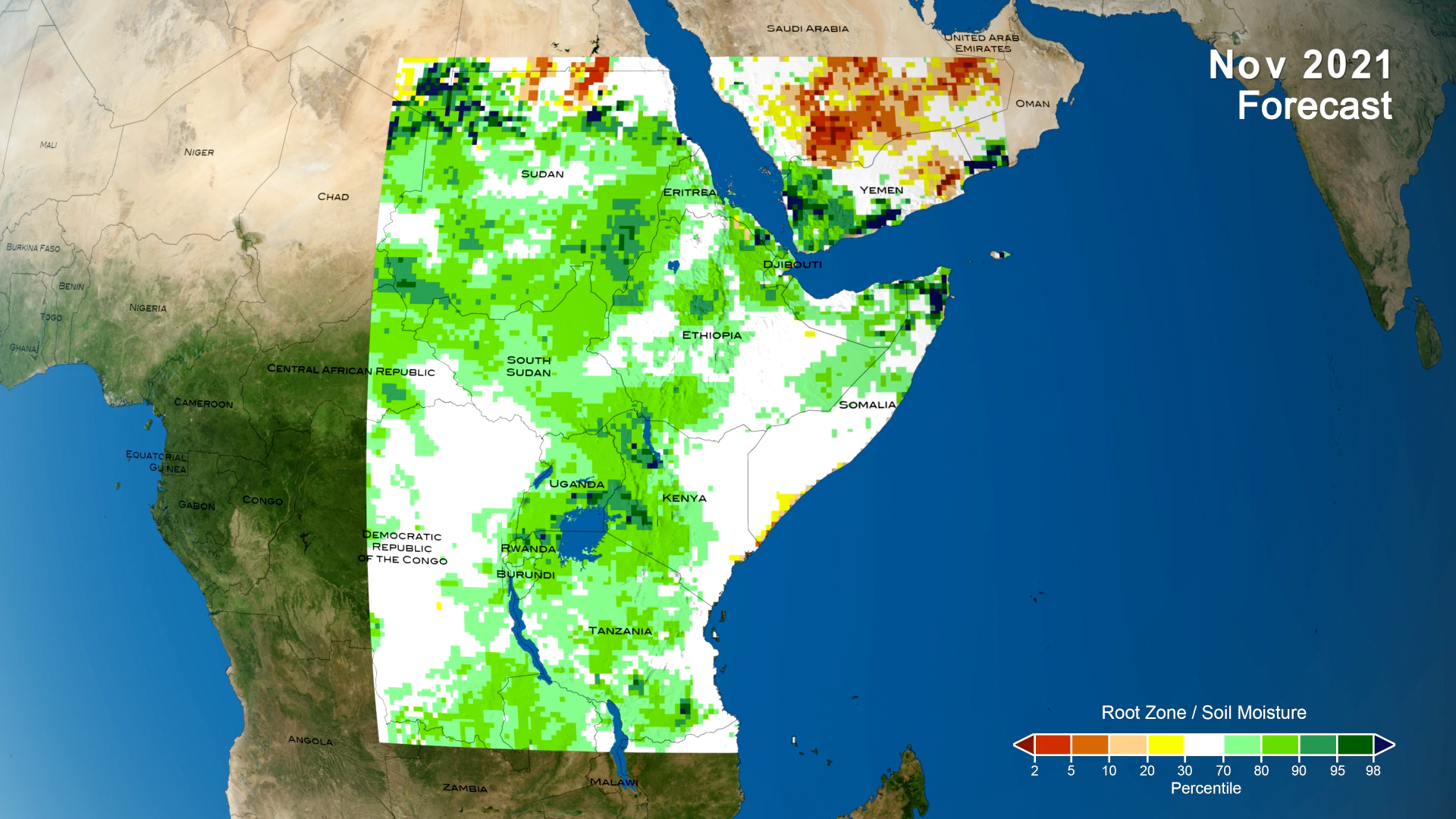
For millions of Africans, droughts and floods affect not only their livelihoods but also life itself when water and food become scarce. Government agencies and relief organizations rely on early warning systems to help residents cope with extreme or prolonged events.
Water scientists at NASA’s Goddard Space Flight Center in Greenbelt, Maryland combined computer models and observational data into the NASA Hydrological Forecast and Analysis System, or NHyFAS.
NHyFAS produces monthly drought and flood potential forecasts for Africa and the Middle East. Since it runs several land surface models in an ensemble, NHyFAS requires the processing power of the Discover supercomputer operated by the NASA Center for Climate Simulation, or NCCS, at NASA Goddard. From the NCCS DataPortal NHyFAS forecast products go directly to food security analysts working with the U.S. Agency for International Development Famine Early Warning Systems Network to inform humanitarian response.
4. Ultra-high resolution simulations help scientists study impacts of climate change
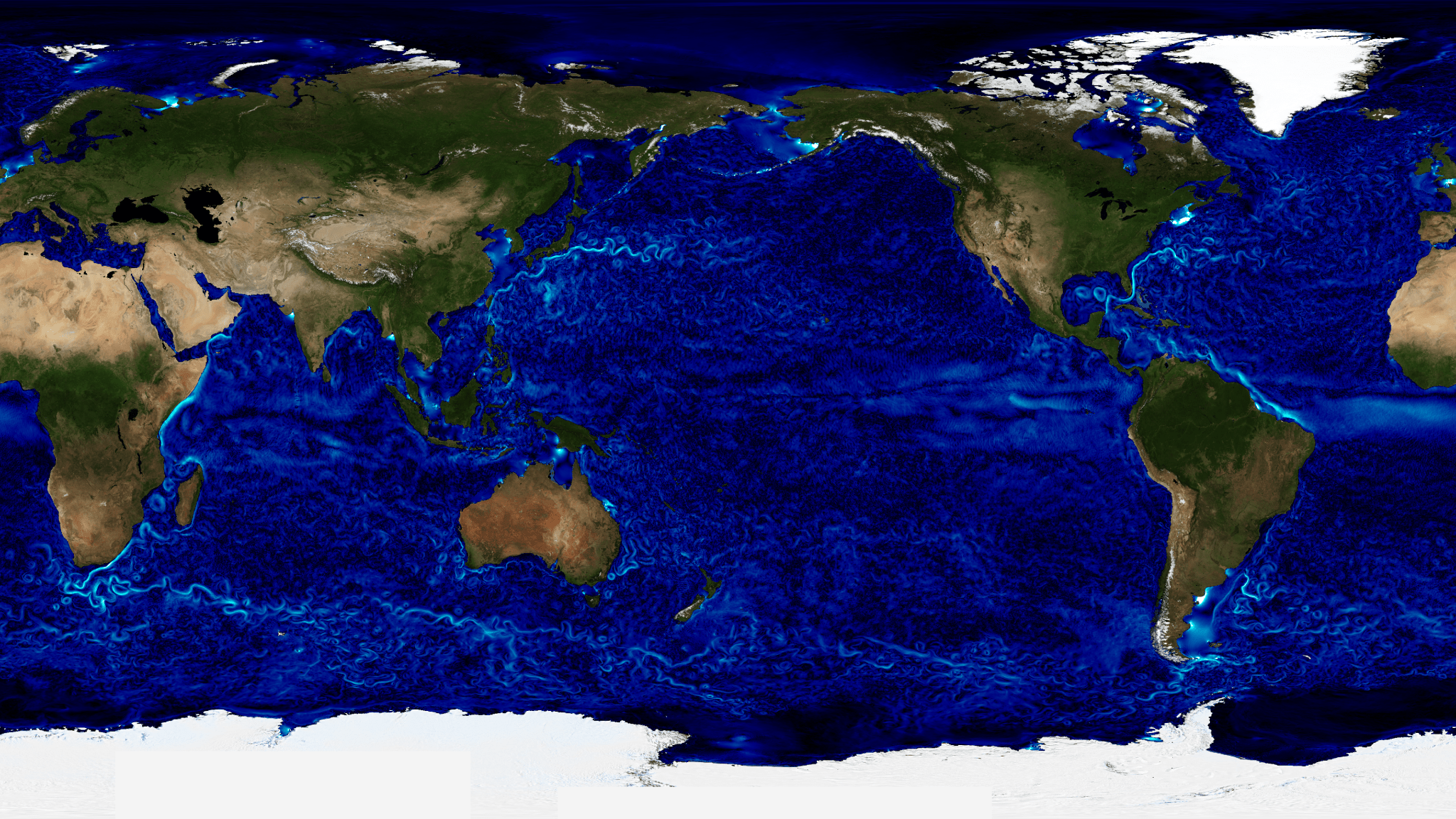
Over the last few years, NASA supercomputing resources have revolutionized Earth science by enabling increasingly realistic global simulations of the atmosphere and the ocean, using two flagship NASA data assimilating models — the Goddard Earth Observing System and Estimating the Circulation and Climate of the Ocean. Now, researchers have combined these models to produce a high-resolution simulation of air-sea interactions around the globe.
By analyzing the results using advanced visualization tools developed by experts at the NAS facility, scientists are gaining a deeper understanding of how the atmosphere and the ocean interact, and how that interaction influences storm tracks, ocean eddies, and equatorial currents. Insights gained also will help researchers design future Earth-observing satellite missions. Learning more about how all of these complex processes work together helps us understand our planet’s climate and weather, and how both are changing.
5. Dazzling simulations let you fly through our galaxy in virtual reality
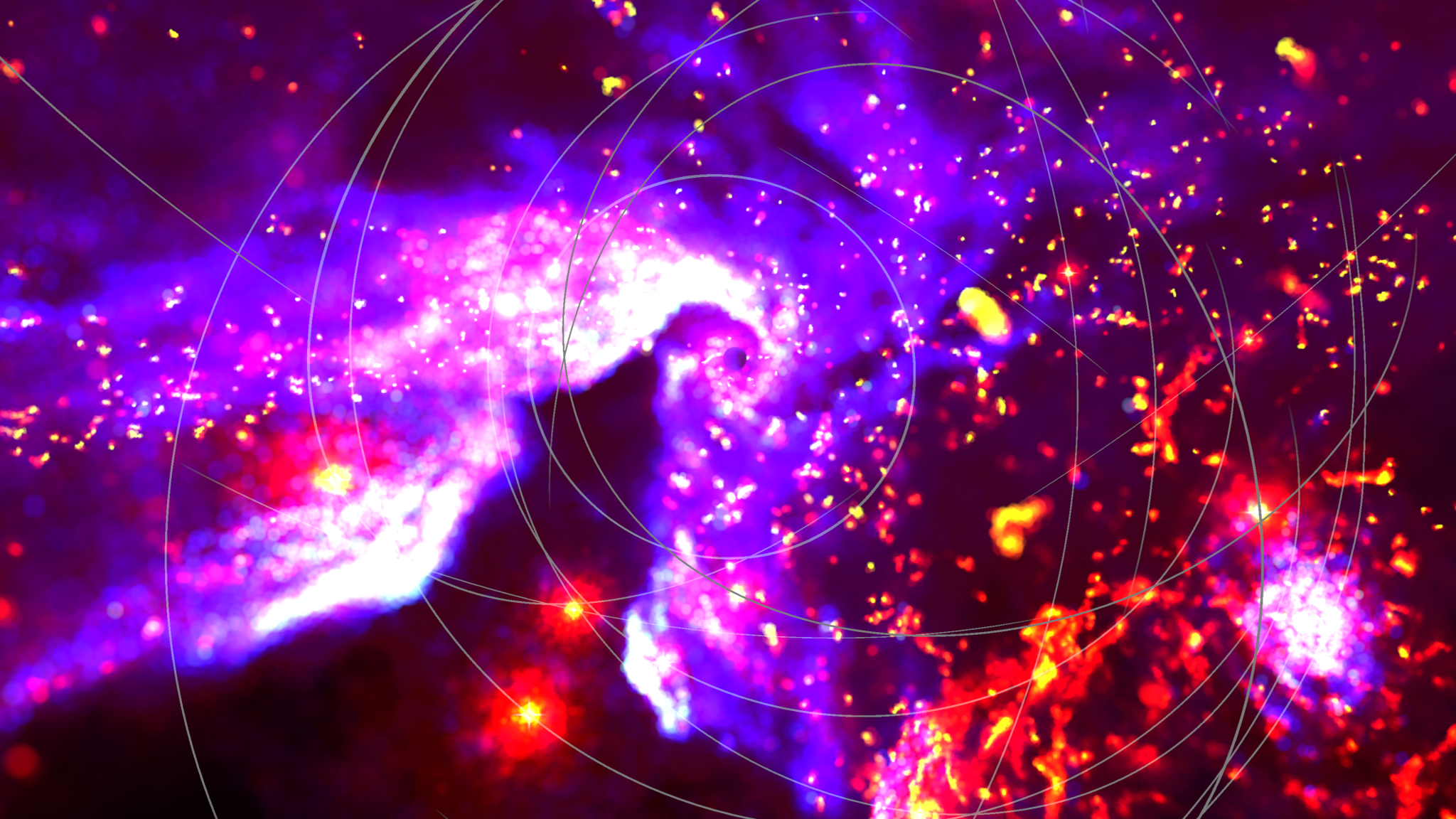
NASA’s Chandra X-ray Observatory spent nearly three months peering at the supermassive black hole in the middle of the Milky Way, revealing a nearby reservoir of extremely hot gas. To help explain the observations, a team of university researchers developed and ran models of the center of our galaxy on the Pleiades supercomputer, simulating the evolution of the black hole and the 25 key stars that orbit it.
The simulations show how the stars spew materials that flow supersonically into space until they collide. The ensuing shocks create the hot gas that Chandra sees. The model closely matches the observations, giving the researchers confidence that the unobservable features in the simulation are on the right track.
To showcase their results, the team created the Galactic Center VR app, which includes the black hole, stars, ejected stellar winds, and X-ray emissions. Users can move forward or backward in time over 500 years of evolution and pause the simulation to get an in-depth view.
6. Innovations in computing are expanding research and improving collaboration
Among these innovations is NASA’s Modular Supercomputing Facility, managed by the NAS Division at Ames, which uses an environmentally conscious and expandable design to provide power efficiency and cost savings. The NAS Division also is expanding its research in machine learning to help improve processing of vast amounts of data from Earth- and space-based instruments, and to explore advances in areas such as pattern recognition and anomaly detection — building tools that will assist NASA in unprecedented ways in future missions.
Another innovative system is the Science Managed Cloud Environment, or SMCE, recently created by engineers at NASA Goddard. The SMCE team and collaborators developed the NASA Earth Information System, or EIS: a flexible, rapid-response computing capability that leverages the versatility of the Amazon Web Services Cloud to yield a collaborative, Open Science environment. EIS delivers analysis-ready products for use by scientists and non-scientists alike, with pilot studies focused on fire, freshwater, and sea level change.
For more information about NASA’s virtual exhibit at the International Conference for High Performance Computing, Networking, Storage and Analysis, visit:
For more information about supercomputers run by NASA’s High-End Computing Program, visit:
-end-
Rachel Hoover
Ames Research Center, Silicon Valley, Calif.
650-604-4789
rachel.hoover@nasa.gov
Rob Gutro
Goddard Space Flight Center, Greenbelt, Maryland
301-286-4044
robert.j.gutro@nasa.gov

